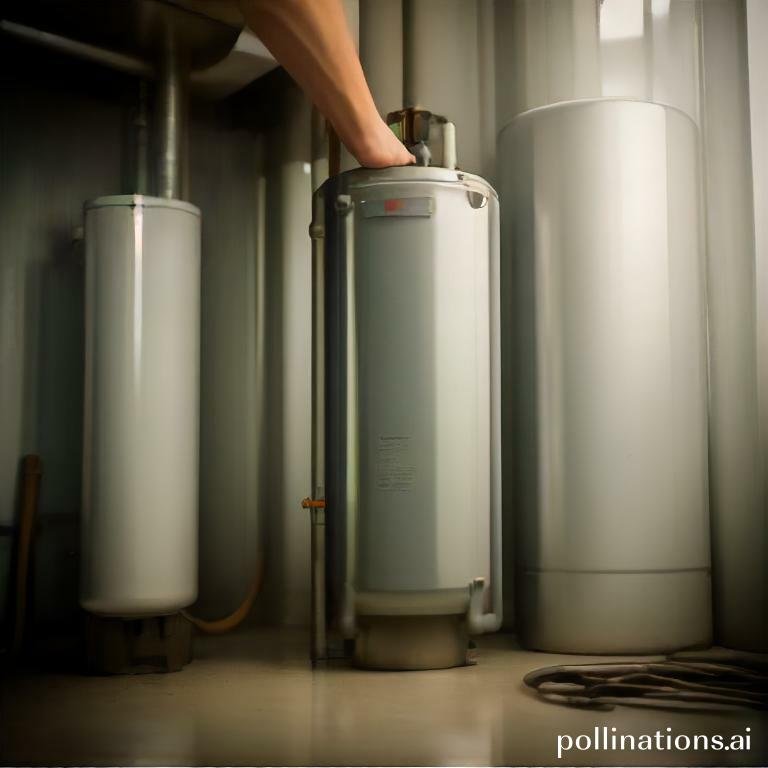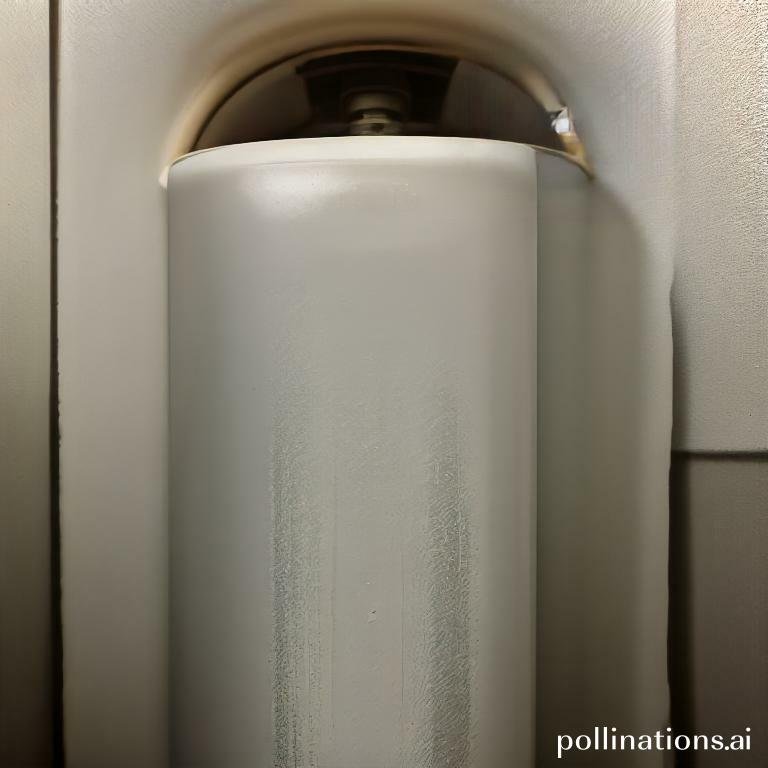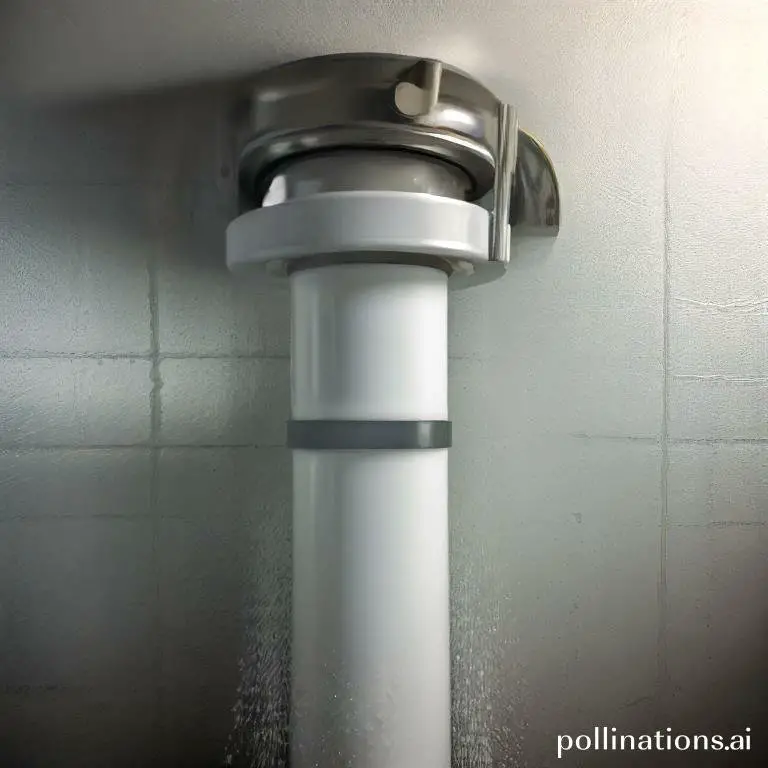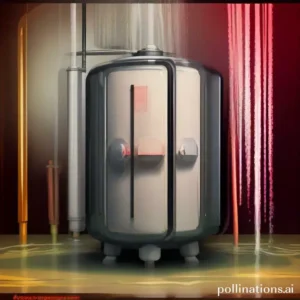
II. It can also improve the quality of the water by removing sediment and mineral buildup, which can affect the taste and smell of the water and potentially clog pipes.
III. Regular flushing can prevent leaks and other costly repairs by removing buildup that can cause corrosion and damage to the tank and other components.
A full water heater flush offers several benefits for homeowners. First and foremost, it helps to remove any sediment or mineral build-up that may have accumulated over time, which can improve the overall efficiency of the water heater.
This can result in lower energy bills and a longer lifespan for the appliance. Additionally, a flush can help to improve the quality of the hot water by eliminating any unpleasant odors or tastes that may be present.
Regular flushing also helps to prevent corrosion and extend the life of the water heater. Overall, a full water heater flush is a simple yet effective way to maintain optimal performance and ensure a reliable supply of hot water.
Signs that your water heater needs a flush
Having a well-functioning water heater is essential for your everyday needs. Nonetheless, over time, sediment and mineral buildup can occur inside the tank, leading to various issues. It is crucial to recognize the signs that your water heater may need a flush to maintain its efficiency and prolong its lifespan.
1. Discolored or foul-smelling water
If you notice that the water coming out of your faucets has a brown or rusty color, it is a clear indication that your water heater needs a flush. Sediment and minerals can accumulate at the bottom of the tank, causing discoloration. Additionally, if there is a foul smell coming from the hot water, it is another sign that it’s time for a flush.
Example: The presence of discolored water can be a result of rust or sediment buildup in your water heater. Flushing the tank will help remove these impurities and restore the clear and odor-free water you desire.
2. Strange noises coming from the water heater
If you start hearing unusual noises, such as popping, banging, or rumbling sounds, it indicates that sediment has built up in the tank. As the water heats up, the sediment hardens and creates these noises. Flushing the water heater can eliminate the sediment, reducing the noise and preventing potential damage to the unit.
Example: The presence of sediment in your water heater can lead to inefficient heating and premature wear and tear on the heating elements. By flushing the tank, you can restore the water heater’s quiet and smooth operation, ensuring optimal performance.
3. Reduced water pressure or flow
If you experience a decrease in water pressure or flow from your faucets or showerheads, it could be a sign of sediment buildup in the water heater. The minerals and sediment can clog the pipes and restrict the water flow. Flushing the tank will help remove these obstructions, restoring proper water pressure.
Example: Sediment buildup can hinder the water flow in your plumbing system, resulting in reduced water pressure and slow filling of bathtubs or sinks. A regular flush of your water heater can prevent these issues and ensure a steady and consistent water flow throughout your home.
| Signs that your water heater needs a flush |
|---|
| Discolored or foul-smelling water |
| Strange noises coming from the water heater |
| Reduced water pressure or flow |
How to flush your water heater
Flushing your water heater regularly is essential in maintaining its efficiency and prolonging its lifespan. Follow these steps to ensure a smooth and effective flushing process:
1. Gathering the necessary tools and equipment
Before starting the flushing process, gather the following tools and equipment:
- A garden hose
- A bucket
- A screwdriver
- A pair of gloves
Having these items ready will make the process more efficient and convenient.
2. Turning off the power and water supply to the heater
Prior to flushing, it is crucial to turn off the power and water supply to the water heater. Locate the breaker for the water heater in your electrical panel and switch it off. Additionally, shut off the water supply valve connected to the heater.
3. Draining the tank and flushing out sediment
Attach one end of the garden hose to the drain valve located at the bottom of the water heater tank. Place the other end of the hose in a nearby drain or outside where the water can safely flow. Open the drain valve and allow the water to flow out. This will help flush out any sediment that may have accumulated at the bottom of the tank. Be cautious as the water may be hot.
4. Refilling the tank and restoring power and water supply
Once the tank is completely drained, close the drain valve and remove the hose. Turn on the water supply valve to refill the tank. Ensure all faucets in your house are closed to prevent any air from entering the system. Once the tank is filled, open a hot water faucet to release any trapped air. Finally, restore power to the water heater by switching on the breaker in the electrical panel.
Regularly flushing your water heater will help remove sediment buildup, improve its efficiency, and extend its lifespan. By abiding by these steps, you can ensure a well-maintained water heater that provides reliable hot water for your household needs.
Frequency of Water Heater Flushing
Regular maintenance of your water heater is crucial to ensure its optimal performance and longevity. Flushing your water heater is an essential part of this maintenance routine. In this section, we will discuss the recommended frequency for flushing your water heater and the factors that may impact this frequency.
1. Recommended Frequency for Flushing
It is generally recommended to flush your water heater at least once a year. Over time, sediment and mineral deposits can accumulate at the bottom of the tank, which can reduce its efficiency and potentially lead to damage. Flushing the tank helps remove these deposits and ensures that your water heater continues to operate efficiently.
Conversely, the frequency of flushing may vary depending on several factors.
2. Factors That May Impact Frequency of Flushing
Water Hardness: If you live in an area with hard water, which contains high levels of minerals like calcium and magnesium, your water heater may require more frequent flushing. The minerals in hard water can accumulate more quickly, leading to a higher risk of sediment build-up.
Usage: The frequency of flushing may also depend on your water heater’s usage. If you have a large household or use hot water frequently, there is a higher chance of sediment accumulation. In such cases, it is advisable to consider flushing your water heater more often.
Age of the Water Heater: Older water heaters may require more frequent flushing. As water heaters age, they become more susceptible to sediment build-up. Regular flushing can help prevent potential issues and extend the lifespan of your water heater.

Benefits of a Full Water Heater Flush
1. Improved Energy Efficiency and Cost Savings
As for your water heater, efficiency is key. By performing a full water heater flush, you can remove sediment buildup that can hinder the performance of your unit. Sediment accumulation can make your water heater work harder, leading to increased energy consumption and higher utility bills. Flushing your water heater regularly can help improve its energy efficiency, resulting in cost savings over time.
2. Extended Lifespan of the Water Heater
Regular maintenance, including a full water heater flush, can significantly extend the lifespan of your unit. Sediment buildup not only affects energy efficiency but can also cause corrosion and damage to the internal components of your water heater. Flushing out the sediment helps prevent these issues and keeps your water heater functioning properly for a longer period.
3. Improved Water Quality and Safety
Over time, sediment and minerals can accumulate in your water heater, affecting the quality of the water you use. This buildup can lead to issues such as discolored water, foul odors, and even metallic taste. By flushing your water heater, you can remove these contaminants and improve the overall quality and safety of your water supply.
| Benefit | Description |
|---|---|
| Improved Energy Efficiency and Cost Savings | Flushing your water heater improves its efficiency, resulting in cost savings. |
| Extended Lifespan of the Water Heater | Regular flushing helps prevent damage and extends the lifespan of your water heater. |
| Improved Water Quality and Safety | Flushing removes sediment and improves the overall quality and safety of your water. |

Risks associated with not flushing your water heater
1. Increased risk of tank corrosion
One of the major risks of not flushing your water heater regularly is an increased risk of tank corrosion. Over time, sediment and minerals can build up at the bottom of the tank. This sediment can cause corrosion, leading to leaks and potential damage to your water heater.
2. Reduced energy efficiency and increased costs
When sediment builds up in your water heater, it creates a layer of insulation between the heating element and the water. This insulation reduces the efficiency of your water heater, causing it to work harder and consume more energy to heat the water. As a result, you may experience higher energy bills and increased costs.
3. Decreased water quality and safety
Not flushing your water heater regularly can also lead to decreased water quality and safety. The sediment and minerals that accumulate in the tank can find their way into your hot water supply. This can result in discolored water, foul odors, and potentially harmful bacteria or contaminants. Flushing your water heater helps remove these impurities, ensuring cleaner and safer hot water.
To emphasize the importance of regular water heater flushing, consider the following facts:
| Fact | Impact |
|---|---|
| Fact 1: Sediment buildup can reduce water heater efficiency by up to 25%. | This means higher energy consumption and increased utility costs. |
| Fact 2: Corroded tanks can lead to leaks and water damage. | Repairing or replacing a water heater can be costly. |
| Fact 3: Contaminated water can pose health risks. | Regular flushing helps maintain water quality and safety. |
Bottom Line
Regular maintenance of your water heater is crucial to ensure its longevity and efficiency. A full water heater flush is a simple yet effective way to remove sediment buildup and improve the performance of your unit. By flushing your water heater, you can save money on energy bills, extend the lifespan of your unit, and improve the quality of your hot water. Additionally, a full flush can help prevent leaks and other costly repairs down the line. So, if you want to keep your water heater running smoothly, consider scheduling a full flush with a professional plumber today.
Read More:
1. Flushing For Improved Water Heater Recovery Time
2. Can Flushing Reduce Water Heater Repair Costs?











